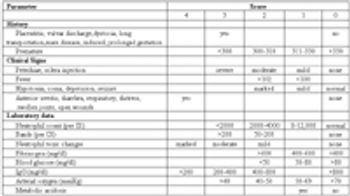
Equine infections neurologic diseases are important individual horse disease but can also occur in significant epizootics and outbreaks with substantial economic loss.

Equine infections neurologic diseases are important individual horse disease but can also occur in significant epizootics and outbreaks with substantial economic loss.

The problem oriented approach to liver disease involves identification of liver disease as a differential diagnosis for several problems.

Equine endocrine disease most often occurs in older horses as a result of dysfunction of the pituitary pars intermedia.

Foals between 1 and 6 months of age frequently present with lower airway infection and is the primary cause of disease and death in foals aged between 1 and 6 months of age.

Laminitis is frustrating for veterinarians because current knowledge and understanding of the pathophysiology and progression of the disease are incomplete, limiting efforts to prevent and treat this devastating disease successfully.

Urinary tract disorders occur infrequently in horses but represent significant diagnostic and therapeutic challenges. In this article, we will discuss identification and management of urinary incontinence and bladder dysfunction, urolithiasis, and hematuria.

"07 Slow to go" is a 48 hour old Thoroughbred filly that was born to a 15 year old Thoroughbred mare.

As in all species, cardiac examination involves cardiac auscultation for rate, rhythm, heart sounds, and murmurs, palpation of peripheral pulses, and examination of peripheral veins and edema.

Published: April 1st 2009 | Updated:

Published: April 1st 2009 | Updated:

Published: April 1st 2009 | Updated:

Published: April 1st 2009 | Updated:

Published: April 1st 2009 | Updated:

Published: April 1st 2009 | Updated: